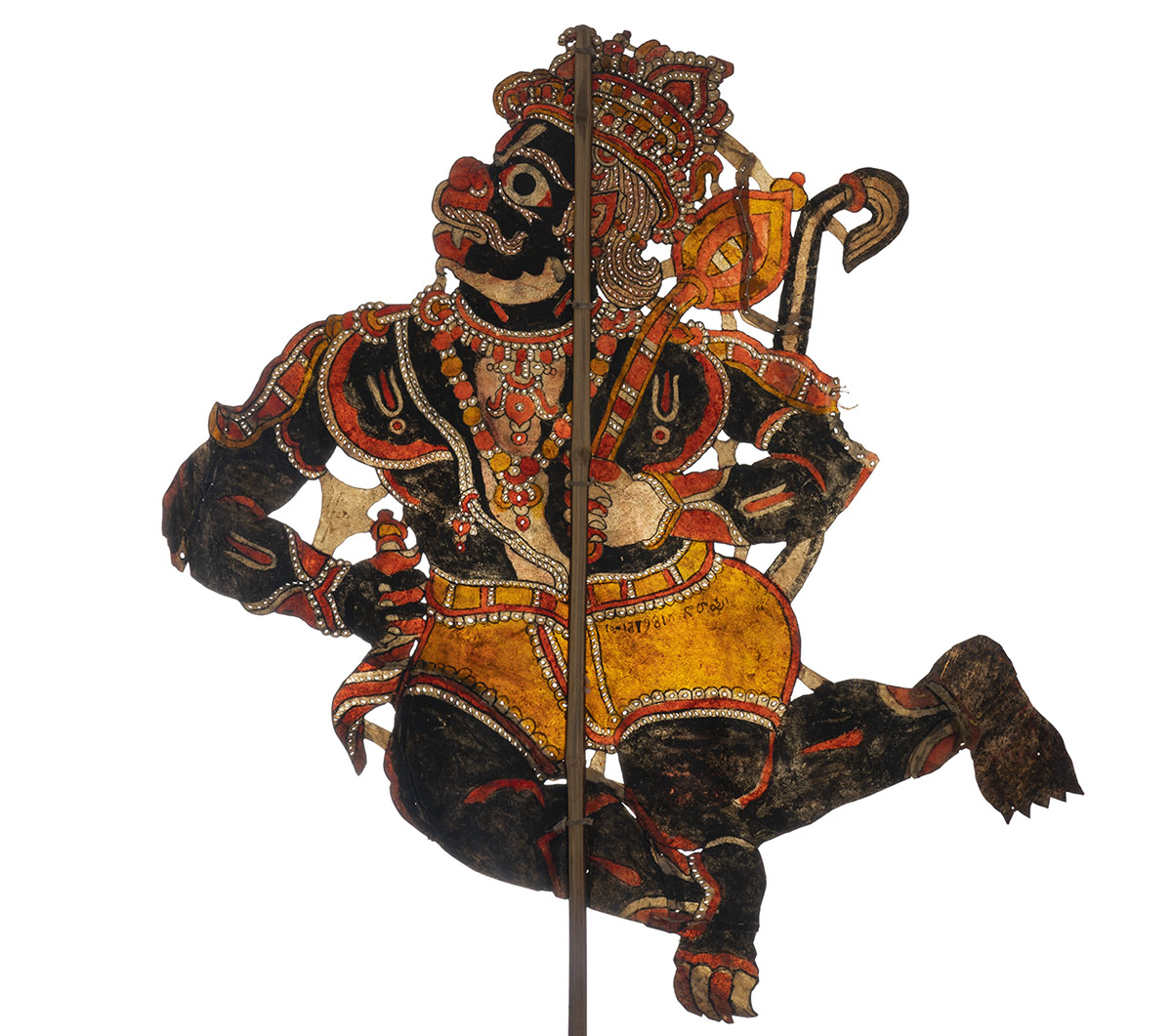Also known as chamadyache bahulya and dayati, charma bahuli natya is a form of shadow puppetry practised by the Thakar community of Maharashtra. Like the string puppetry tradition known as kalasutri bahulya, charma bahuli natya is also now seen primarily in the Sindhudurg district on the southern coast of the state.
While beginnings of charma bahuli natya remain unclear, the Thakar community – who are associated with several performing arts – originally belonged to Rajasthan. It is believed that the Thakars made their way to Maharashtra during the rule of Shivaji Bhonsle I in the seventeenth century, working for him as spies due to the itinerant nature of their work. Later, the community came under the patronage of the rulers of Sawantwadi, who invited them to settle in Sindhudurg, and perform at the palace and local temples during festivals. Traditionally, the practice of charma bahuli natya was the preserve of a particular line of Thakar families, who also inherited the right to perform at specific places or for specific audiences.
Made from translucent buffalo leather, the puppets of charma bahuli natya measure between 11 and 35 cm. These are lightly painted with vegetable-based pigments and were traditionally made without joints or perforations. Newer puppets, however, may be perforated. A bamboo split attached vertically along the length of the puppet is used to hold it up during a performance. When required, a moveable arm is pinned onto a puppet and is manoeuvred by the puppeteer using a second split. A complete set of puppets can include up to sixty five characters.
The repertory of charma bahuli natya comprises episodes from the Ramayana. It is performed on a makeshift stage built of bamboo poles and cloth. An oil wick lamp, called panati, is suspended from a hook and functions as the primary source of light. Inside the cubicle-like staging area, the puppeteer arranges the puppets in order of appearance. A performance begins with a purvaranga, or a prelude, invoking the Hindu gods Ganesha and Saraswati, followed by the depiction of a dance performance in the court of Indra. This segment uses puppets depicting musicians and a dancer. The central plot follows, with the introduction of the character Haridasa as its narrator or sutradhara. The puppeteer is accompanied by singers and musicians, who typically play a dholki (a horizontal percussion drum), cymbals and an instrument known as vatavadya – an upturned bronze plate on which a thin twig is rubbed to produce a droning sound.








